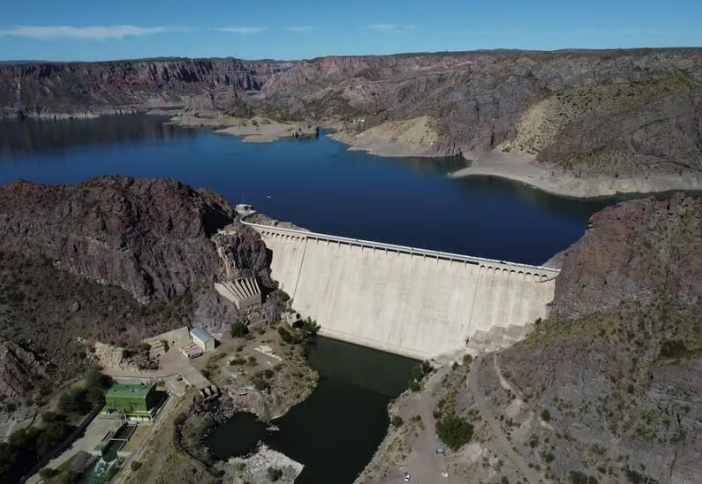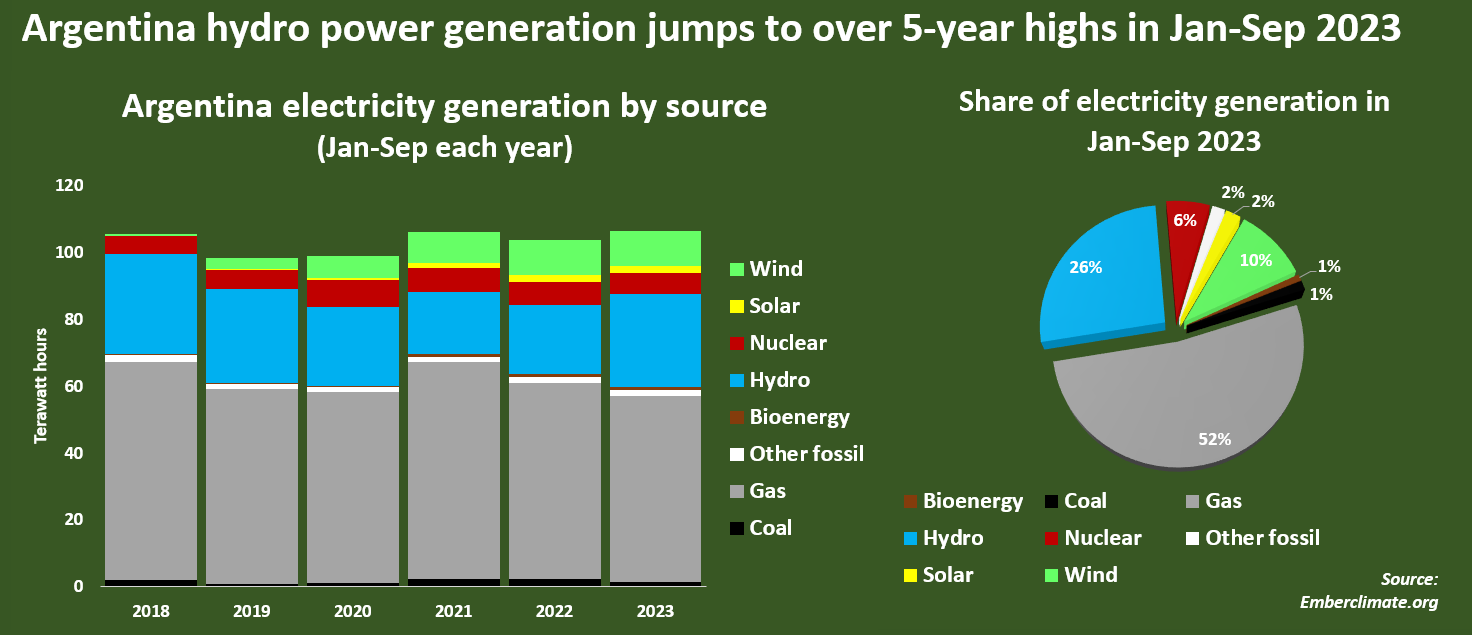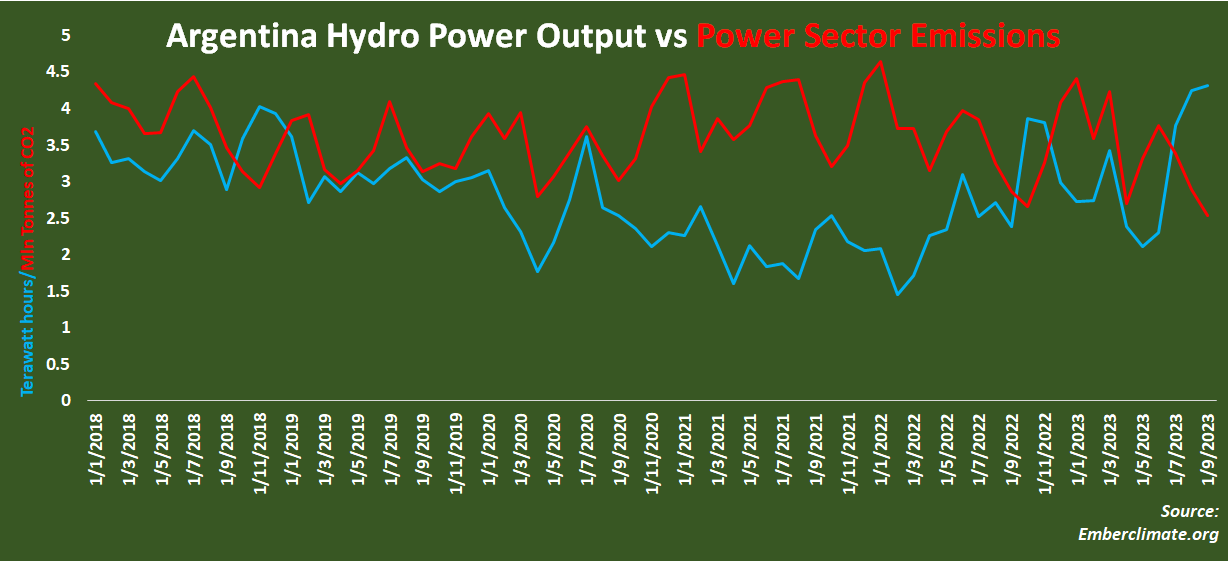
LITTLETON, Colorado, Nov 15 (Reuters) - Heavy rains over the southern hemisphere winter boosted hydro power generation in Argentina to its highest monthly total in September in over five years, and helped power firms slash fossil fuel use and emissions to multi-years lows this year.
Argentina's higher hydro load also helped South America's second largest economy lift the share of clean power in electricity generation to a record 59% in September, up from 45% in September 2022, data from think tank Ember shows.

Continued high hydro output, along with increased generation from solar parks during the southern hemisphere summer, could help the relative laggard in regional clean energy generation drive fossil fuel use lower still in 2023, and accelerate the country's energy transition efforts.
HYDRO MOMENTUM
Argentina's hydro power generation through September totalled 28 terawatt hours (TWh), which marked a 36% jump from the same period in 2022 and the highest cumulative tally for that period since 2018, Ember data shows.
The greater hydro output was driven by heavy rains in May and June, which caused localised flooding and pushed water levels to 10-year highs on key river basins in the centre of the country, according to the Red Cross.
Some of the excess precipitation was channelled to reservoirs and hydro dams, which in turn helped push hydro power's share of Argentina's electricity mix to more than 26% through September, from less than 20% in 2022.
This increased volume of dispatchable clean energy in turn allowed power generators to pare use of fossil fuels in power generation.

Argentina Hydro Power Output vs Power Sector Emissions
Natural gas generation was 55.7 TWh through September, down close to 5% from the same period a year ago. Associated emissions from gas-fired generation were 27.3 million tonnes of carbon dioxide and equivalent gases, down by more than 1.4 million tonnes from the same period in 2022.
Coal-fired power was also cut in 2023, dropping by 42% to 1.3 TWh from 2.3 TWh in the January to September window in 2022.
Resulting coal emissions dropped by around 800,000 tonnes of CO2, bringing Argentina's total power sector emissions down by more than 2 million tonnes from the first nine months of 2022.
CATCHING UP
While the strong hydro performance so far in 2023 has helped Argentina notch up a new record in terms of clean power output, Argentina's average share of clean power in total electricity generation still sharply lags behind regional clean power leader Brazil, as well as the regional average.
Through September, an average of 45% of Argentina's electricity was generated from clean sources, which is up from 39.5% for the same period in 2022.
However, Brazil has generated more than 90% of its electricity from clean sources for the past 15 months running, and so is by far South America's clean power leader.
Chile's average share of clean power generation is 59% for 2023 so far, while the average for Latin America and the Caribbean as a whole is 65%, according to Ember.
With Argentina still to cross the 50% clean power generation threshold on an annual basis, it is clear the country's power producers still have work to do in order to match regional rivals and make good on government aims to reduce emissions.
But with more hydro dams in development, including the 360 megawatt La Barrancosa project nearing completion, and steep increases in solar and wind output expected annually, Argentina's power producers are already catching up.